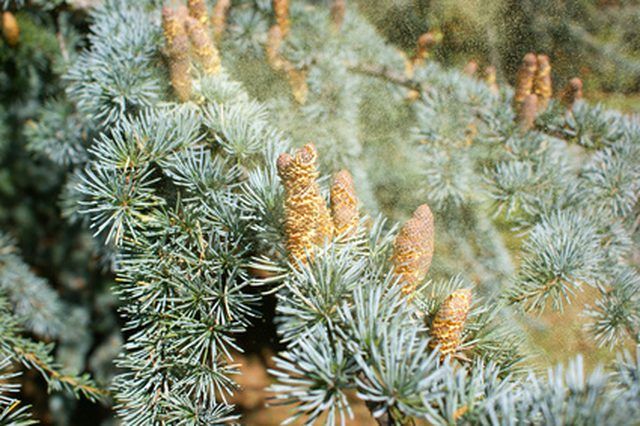Bulbs
Flower Basics
Flower Beds & Specialty Gardens
Flower Garden
Garden Furniture
Garden Gnomes
Garden Seeds
Garden Sheds
Garden Statues
Garden Tools & Supplies
Gardening Basics
Green & Organic
Groundcovers & Vines
Growing Annuals
Growing Basil
Growing Beans
Growing Berries
Growing Blueberries
Growing Cactus
Growing Corn
Growing Cotton
Growing Edibles
Growing Flowers
Growing Garlic
Growing Grapes
Growing Grass
Growing Herbs
Growing Jasmine
Growing Mint
Growing Mushrooms
Orchids
Growing Peanuts
Growing Perennials
Growing Plants
Growing Rosemary
Growing Roses
Growing Strawberries
Growing Sunflowers
Growing Thyme
Growing Tomatoes
Growing Tulips
Growing Vegetables
Herb Basics
Herb Garden
Indoor Growing
Landscaping Basics
Landscaping Patios
Landscaping Plants
Landscaping Shrubs
Landscaping Trees
Landscaping Walks & Pathways
Lawn Basics
Lawn Maintenance
Lawn Mowers
Lawn Ornaments
Lawn Planting
Lawn Tools
Outdoor Growing
Overall Landscape Planning
Pests, Weeds & Problems
Plant Basics
Rock Garden
Rose Garden
Shrubs
Soil
Specialty Gardens
Trees
Vegetable Garden
Yard Maintenance
Blue Atlas Cedar Tree Information
Blue Atlas Cedar Tree Information. An impressive evergreen needled tree, the blue Atlas cedar (Cedrus atlantica f. glauca) potentially grows 100 to 130 feet tall and 30 to 40 feet wide. Magnificent as a solitary specimen tree in a spacious lawn or on the edge of a lake, this cone-producing plant also develops attractive fissured silvery gray bark....

An impressive evergreen needled tree, the blue Atlas cedar (Cedrus atlantica f. glauca) potentially grows 100 to 130 feet tall and 30 to 40 feet wide. Magnificent as a solitary specimen tree in a spacious lawn or on the edge of a lake, this cone-producing plant also develops attractive fissured silvery gray bark. The persistent blue-gray needles and branches mask the bark. Grow the relatively slow-growing blue Atlas cedar in USDA winter hardiness zones 6 through 9.
Origins
Blue Atlas cedar is native to the Atlas Mountains of Morocco in the extreme northwestern reaches of Africa. It is a naturally occurring form of the Atlas cedar, which displays more greenish needles in comparison to those of the blue Atlas cedar.
Taxonomic Relationships
This species of cedar is a member of the pine family, Pinaceae. It is in the same genus (Cedrus) as other "true cedars" such as the cedar of Lebanon (Cedrus libanii). Cyprian cedar (Cedrus brevifolia) and the deodar cedar (Cedrus deodora), which are widely grown in ornamental gardens, too. This genus of plants is not in the same family as the trees from North American commonly referred to as cedars (Juniperus spp.), or eastern Asia cedars (Cryptomeria spp.).
Foliage Features
On the branches of the blue Atlas cedar are short spurs that carry short shoots of needles. The needles are 1/2 to 1 inch long and slightly curving and grow in spiraling clusters of 30 to 45 needles, according to the American Horticultural Society's "A-Z Encyclopedia of Garden Plants." They are colored a frosty silvery blue or blue-gray, being nearly white when first emerging on new growth. The needles are shed annually across the growing season and replaced with new needles on the branch spurs.
Cone Production
As a gymnosperm (non-flowering plant), the blue Atlas cedar doesn't flower but reproduces by developing male and female gendered cones on its branches. In early fall the male cones appear across the tree branches. They are erect, narrow cylinders and light brown, measuring no more than 3 inches in length. They shed their pollen into the wind and fertilize the female cones on the tree. The female cones are barrel-shaped and much rounder/plumper in shape. At first they are green in color but ripen over two years to become brown, about 5 inches long. Once mature, the female cone dries and breaks apart and releases the dry, naked seeds into the wind for dispersal.
Growing Requirements
Since this tree reaches such large mature proportions, select a spacious landscape site to plant it. Blue Atlas cedar needs a fertile soil that is moist but well-draining. It is tolerant of urban air pollution, drought and sandy soils but grows faster and more lushly if not in such conditions. Avoid garden sites that are bombarded by wind gusts. It should receive full sun (at least eight hours of direct sun rays daily) in order to develop a uniform shape and habit.
Ornamental Selections
In the nursery trade, blue Atlas cedars may be sold with the cultivar name "Glauca." Although this has no taxonomic merit, the name is readily assigned to individual trees demonstrating a particularly blue or attractive silvery blue needle coloration. A weeping cultivar, "Glauca Pendula" bears exceptionally pendent branches, ultimately creating a smaller-sized tree that can be trained to look like a dome or curtain.